Exocrine pancreas secretions stimulated by 142382-What secretions does the pancreas produce
Abstract The effect of glucagon on exocrine pancreatic secretion stimulated by a test meal was studied in three dogs with a chronic gastric fistula and a modified Thomas duodenal fistula which allows easier collection of pure pancreatic juice after a meal Glucagon was given by continuous intravenous infusion in doses of 5, 10, 15, or 30 microgram/kg per hour, before and during a testDigestion by pancreatic lipases • The exocrine pancreas produces two types of pancreatic juice o enzymerich pancreatic juice (stimulated by CCK) o bicarbonaterich pancreatic juice (stimulated by secretin) • Exocrine pancreas secretions are delivered through the hepatopancreatic sphincter (aka sphincter of Oddi) into the duodenum via the pancreatic ductCholecystokinin is released by I Cells in the duodenum and jejunum upon entry of food and primarily stimulates synthesis of digestive

Pancreatic Juice An Overview Sciencedirect Topics
What secretions does the pancreas produce
What secretions does the pancreas produce- Pancreatic enzymes represent the active ingredient of the pancreatic fluid They are produced, stored and secreted by acinar cells in response to CCK Pancreatic enzymes are extremely potent and can digest any type of macromolecule, hence they are secreted in the aforementioned inactive forms (proenzymes)Pancreatic stellate cells produce acetylcholine and may play a role in pancreatic exocrine secretion Phoebe A Phillipsa,1, Lu Yanga, Arthur Shulkesb, Alain Vonlaufena,c, Anne Poljakd,e, Sonia Bustamanted, Alessandra Warrenf, Zhihong Xua, Michael Guilhausd, Romano Pirolaa, Minoti V Aptea,2, and Jeremy S Wilsona,2 aPancreatic Research Group, South Western Sydney Clinical




Exocrine Pancreas And Salivary Gland Physio Flashcards Quizlet
The pancreas is a long, slender organ, most of which is located posterior to the bottom half of the stomach ()Although it is primarily an exocrine gland, secreting a variety of digestive enzymes, the pancreas has an endocrine function Its pancreatic islets —clusters of cells formerly known as the islets of Langerhans—secrete the hormones glucagon, insulin,Stimulated pancreatic exocrine secretions, although doses of l10 nmol kgl hl of pancreastatins were needed to inhibit insulin release (6,8,9) Therefore, we tested the effect of 100 pmol kgl h' of rat pancreastatin Cterminal fragment on the inductions of pancreatic exocrine secretions by several stimulaFood molecules, primarily proteins and fats, stimulate these cells and CCK is released into the blood stream(1, 2) CCK stimulates pancreatic secretion by two possible mechanisms First, CCK binds CCK1 receptors on pancreatic acinar cells and stimulates release of enzymes
Introduction The human exocrine pancreas secretes 12 liters of pancreatic juice per day When stimulated, the pancreas secretes alkaline pancreatic juice containing copious amounts of bicarbonate (HCO 3) (23, 74) HCO 3 plays essential roles in the digestive system Angiotensin II stimulates exocrine pancreatic secretion (Tsang, Cheng, and Leung 04) but inhibits the synthesis and release of insulin from the islets (Lau, Carlsson, and Leung 04) SST acts as a hormone and as a neurotransmitter It acts as a hormone by inhibiting CCK or ceruleinstimulated amylase secretion and inhibits insulin secretionDecrease in pancreatic exocrine secretions Contraction of the gallbladder Increase in the rate of gastric emptying Increased synthesis of growth hormone Increased insulin release Octreotide reduces exocrine pancreatic secretions so is used to treat high output pancreatic fistulae (though parenteral feeding is most effective) Other uses include variceal bleeding and treatment
Exocrine function of the pancreas The pancreas produces roughly 15–2 L of digestive secretions, which travel to the duodenum via the pancreatic duct These secretions consist of bicarbonate, which makes the fluid alkaline (pH 8), and several enzymes that are essential for digestion Trypsinogen and chymotrypsinogen are inactive proteaseStimulates pancreas during cephalic phase;Objectives Secretinstimulated magnetic resonance imaging (sMRI) is the best validated radiological modality assessing pancreatic exocrine secretion In this prospective observational study, we compare the diagnostic accuracy of sMRI for exocrine pancreatic failure due to different pancreatic diseases and healthy controls Methods We performed sMRI in 21 cystic




Diagram Illustrating The Control Of Exocrine Pancreatic Secretions By Download Scientific Diagram
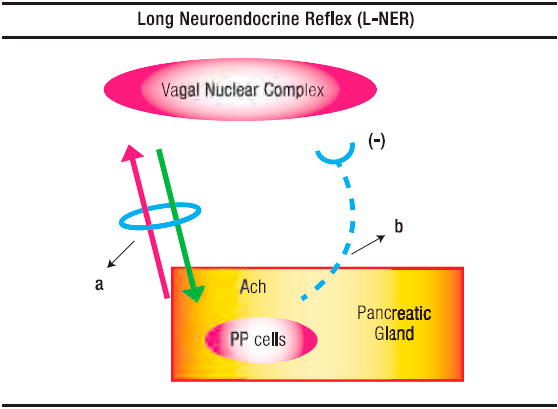



Pancreatic Polypeptide A Review Of Its Involvement In Neuro Endocrine Reflexes Islet Acinar Interactions And Ethanol Evoked Physiopatologic Pancreatic Gland Changes
Pressed in exocrine pancreas, where its levels are increased by refeeding and chemically induced pancreatitis However, its function in the exocrine pancreas remains unknown Here, we show that FGF21 stimulates digestive enzyme secretion from pancreatic acinar cells through an autocrine/paracrine mechanism that requires signaling through aExocrine glandThe liver and pancreas are both exocrine and endocrine glands;Taste of food stimulates pancreatic secretion In addition to this, sight or smell also can also stimulate 2 Gastric Phase Presence of food in the stomach by way of mechanical distension and chemical composition stimulates pancreatic secretion Distension of stomach causing pancreatic secretion of enzymes is called gastropancreatic reflex




Pancreas Physiology Intechopen
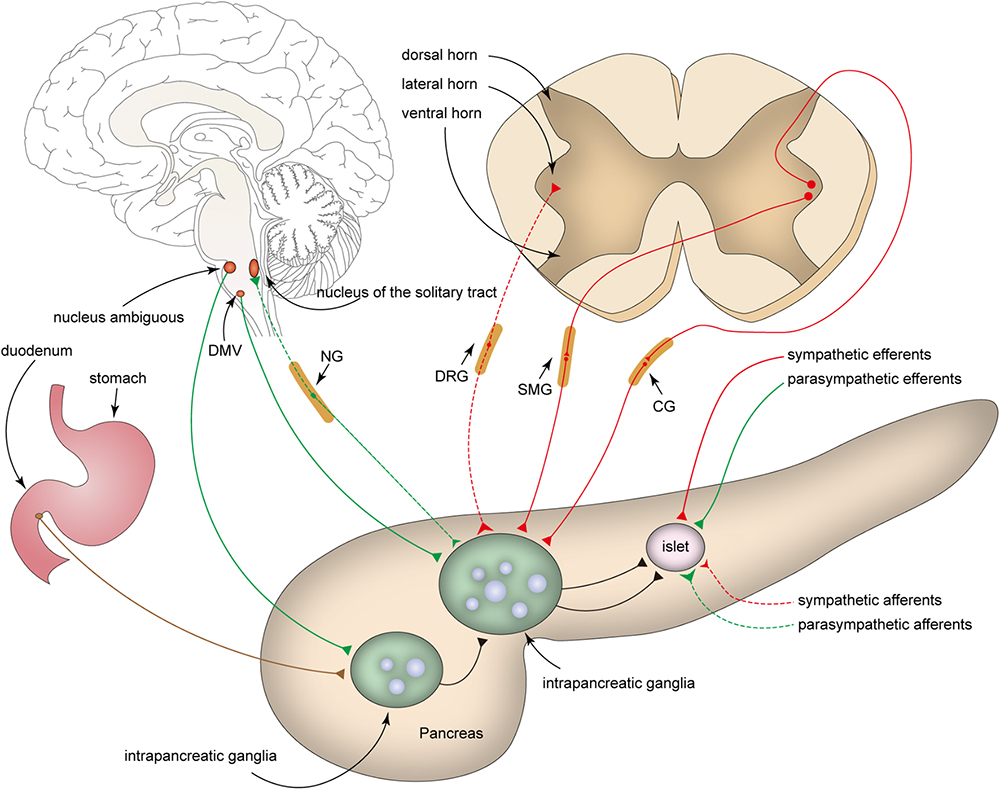



Frontiers Intrapancreatic Ganglia And Neural Regulation Of Pancreatic Endocrine Secretion Neuroscience
Low blood glucose levels stimulate its release The beta cell produces the hormone insulin and makes up approximately 75 percent of each isletGland area of the stomach that could stimulate pancreatic secretion e (23) And;Bile salts in the regulation of exocrine pancreatic secretion Effect of bile and bile salts on basal and hormonally stimulated pancreatic secretion Evaluating pancreatic function tests with secretin in man, Forell et al (7) observed a lower secretion rate of trypsin, lipase, amylase, bicarbonate, and fluid in patients without
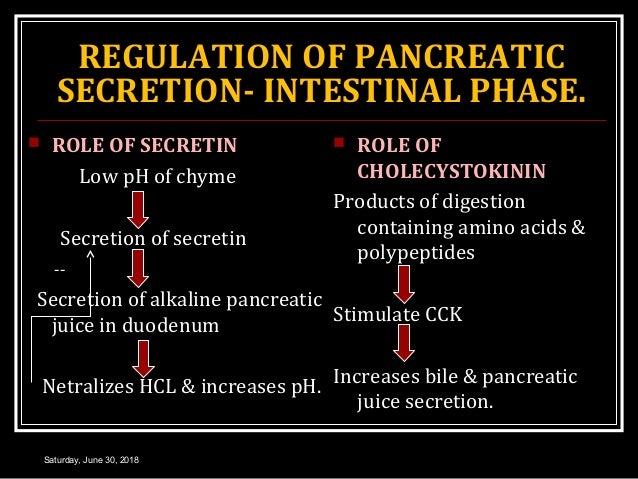



Pancreas




Pancreatic Secretion Abdominal Key
Distinguish between the exocrine and endocrine secretions of the pancreas a The exocrine pancreas produces bile and the endocrine pancreas concentrates and stores bile b The exocrine pancreas produces acidic secretions and the endocrine pancreas produces alkaline secretions c The exocrine pancreas produces mucous and the endocrineLittle is known about exocrine pancreatic secretory function in patients with acute pancreatitis, in partic ular during the early phase of the disease Therefore, this study evaluates basal and stimulated pancreatic secretion in vivo and in vitro in four different modelsPancreatic juice is composed of two secretory products critical to proper digestion digestive enzymes and bicarbonate The enzymes are synthesized and secreted from the exocrine acinar cells, whereas bicarbonate is secreted from the epithelial cells lining small pancreatic ducts Digestive Enzymes The pancreas secretes a magnificent battery of enzymes that collectively



Regulation Of Pancreatic Secretion Pancreapedia




Pancreas Secretion An Overview Sciencedirect Topics
Produced by duct cells in pancreas Secretion of alkaline fluid stimulated by hormone secretion Alkaline fluid neutralises acid chyme delivered from stomach and creates optimum pH for pancreatic and intestinal digestive enzymesThe amount of somatostatin released after a meal thus was of sufficient magnitude to inhibit exocrine pancreatic function and PP release On the other hand, basal and argininestimulated glucagon and insulin secretions were not significantly affected by these plasma concentrations of intravenous somatostatin suggesting that the exocrineThe end effect of this is to cause depolarisation of the cell membrane which stimulates the release of the insulin The main factor influencing the secretion of insulin and glucagon are the levels of glucose in blood plasma Low blood sugar stimulates glucagon release, and high blood sugar stimulates insulin release




Exocrine Pancreas And Salivary Gland Physio Flashcards Quizlet




Pdf Secretion Of The Human Exocrine Pancreas In Health And Disease Semantic Scholar
Goebell et al, 1973b) In order to gain more information about the nature ofthe inhibitory action ofcalcitonin on the human pancreas, in the present study two major approacheswere performed 1 The effects of calcitonin on exocrine pancreatic secretion stimulated by CCKPZTrypsinogen get activated by?They are exocrine glands because they secrete products—bile and pancreatic juice—into the gastrointestinal tract through a series of ducts, and endocrine because they




The Stomach And The Pancreas Anatomy And Physiology




Pancreatic Secretion Dr Amel Eassawi Dr Shaikh Mujeeb Ahmed Ppt Download
Regulation of Secretion Exocrine pancreatic secretions are regulated by hormonal, neural, and paracrine input during the cephalic, gastric, and intestinal phases of secretion In the cephalic phase of exocrine pancreatic secretion, acetylcholine released by vagal postganglionic neurons stimulates H ion secretion by parietal cells (Figure 607) Gastric acid evokes duodenal secretin release, There are a number of factors involved in triggering the pancreas to release its secretions Vagal innervation to the pancreas stimulates the secretion of enzymes This stimulation occurs when we see, smell or taste food, or when the stomach wall is stretched There are also other ways in which the body encourages pancreatic secretions What stimulates pancreatic enzyme secretion?




Physiological And Reproductional Aspects Of Animal Production Digitalis Tankonyvtar




Pancreas The Pancreas Acts As An Exocrine Gland
1 Exocrine Secretions of Pancreas Ibra Cham ;Hormone secreted into bloodstream by the stomach wall in response to the presence of foodANF stimulated exocrine pancreatic secretion in the rat, and its effect was not mediated by nitric oxide or parasympathetic or sympathetic activity Furthermore, CCK and secretin appear not to be involved in ANF response Present findings support that ANF exerts a stimulatory effect on pancreatic exocrine secretion mediated by NPRC receptors




Solved The Intestinal Hormone Cholecystokinin Causes The Chegg Com




Molecular Mechanisms Of Pancreatic Bicarbonate Secretion Pancreapedia
Ileum cholecystokinin (CCK) hormone secreted by cells in duodenum; We have investigated a physiological role of endogenous insulin on exocrine pancreatic secretion stimulated by a liquid meal as well as exogenous secretin and cholecystokinin octapeptide (CCK8) in conscious rats Each rat was prepared with a chronic pancreatic fistula and an indwelling catheter in a jugular vein Oral ingestion of a liquid meal (5 pancreatic secretion CCK also stimulates gallbladder contraction and enhances growth of the exocrine pancreas (63, 115, 138) CCK is produced and released by the intestinal mucosal I cells (78) This source of CCK may travel through the circulation to target tissues that include the exocrine pancreas and gallbladder (65, 78) CCK peptides are
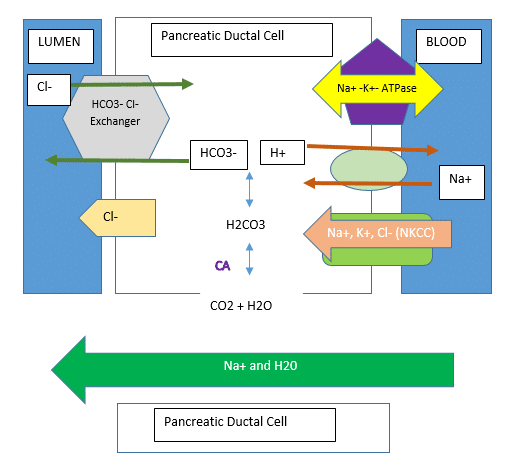



The Exocrine Pancreas Function Secretion Regulation



Exocrine Pancreas Biochemistry Flashcards Draw It To Know It
Pancreatic secretions are primarily regulated by three factors which act synergystically to potentiate one another's effects Acetylcholine Released by vagal efferents primarily stimulates synthesis of digestive enzymes by pancreatic acinar cells;Stimulates release of bile into intestine and secretion of enzymes by pancreas gastrin from gastric antrum;Digestive System> Pancreas Control of Pancreatic Exocrine Secretion As you might expect, secretion from the exocrine pancreas is regulated by both neural and endocrine controls During interdigestive periods, very little secretion takes place, but as food enters the stomach and, a little later, chyme flows into the small intestine, pancreatic secretion is strongly stimulated



Pancreatic Secretion Gastrointestinal Medbullets Step 1
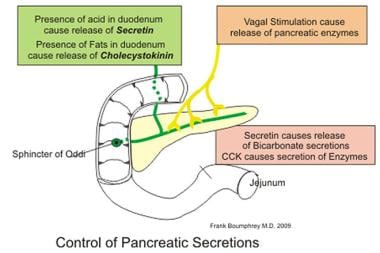



Exocrine Pancreatic Insufficiency Practice Essentials Anatomy Pathophysiology
Objective Volume output failure is a feature of decreasing exocrine pancreatic function This parameter is assessed by secretinstimulated MRI in several studies Our purpose was to evaluate ultrasonography of the fluid in the descending duodenum 1 A method of measuring the permeability of the pancreas by determining the apparent reflexion coefficient (sigmaA) is described, in the isolated pancreas secreting maximally under the influence of secretin The principle is to add a non‐electrolyte to the perfusate which will create an osmotic gradient (RTsigmadeltaC) counter to that of active transport and reduce the Its secretion is strongly stimulated by the presence of partially digested proteins and fats in the small intestine As chyme floods into the small intestine, cholecystokinin is released into blood and binds to receptors on pancreatic acinar cells, ordering them to secrete large quantities of digestive enzymes



1



Cholecystokinin
In 1968, Schapiro was able to show that perfusion with ethanol of the antral pouch of the dog stimulated the pancreas via this humoral agent (24) Schapiro* in an excellent review article* tried to tie together all of these possible mechanisms into hisCells and Secretions of the Pancreatic Islets Glucagon plays an important role in blood glucose regulation;Autonomic pathways regulating pancreatic exocrine secretion The parasympathetic (PNS) and sympathetic (SNS) and nervous systems densely innervate the exocrine pancreas Efferent PNS pathways, consisting of central dorsal motor nucleus of the vagus (DMV) and peripheral pancreatic neurons, stimulate exocrine secretion



Regulation Of Pancreatic Secretion Version 1 0 Pancreapedia




Pdf Neural Hormonal Regulation Of Exocrine Pancreatic Secretion Semantic Scholar
Exocrine pancreatic secretion The exocrine pancreas has classically been understood to be stimulated by the vagus nerve and enterohormones already discussed 25 Exocrine pancreatic secretions are released throughout various phases of the digestive process4 Activation of Proteolytic Enzymes Where are they activated?The intraduodenal application of a protease inhibitor (800 mg camostate) significantly stimulates the secretion of the exocrine pancreas in the fasting dog After 15 min the protein release




Exocrine Pancreas And Liver Lippincott Illustrated Reviews Physiology Lippincott Illustrated Reviews Series




Exocrine Pancreas An Overview Sciencedirect Topics
Histamine acts together with gastrin to stimulate increased release of HCl The gastric phase of digestion begins when the stomach contains peptides and is distended Both neural reflexes and the hormone gastrin mediate increased gastric juice secretion during the gastric phasePancreatic juice secretion is principally regulated by the hormones secretin and cholecystokinin, which are produced by the walls of the duodenum, and by the action of autonomic innervation The release of these hormones into the blood is stimulated by the entry of the acidic chyme into the duodenum2 Types of Secretions Digestive enzymes (Where are they produced?) H2O & HCO3 (Where are they secreted from?) 3 Digestive enzymes For Proteins eg?
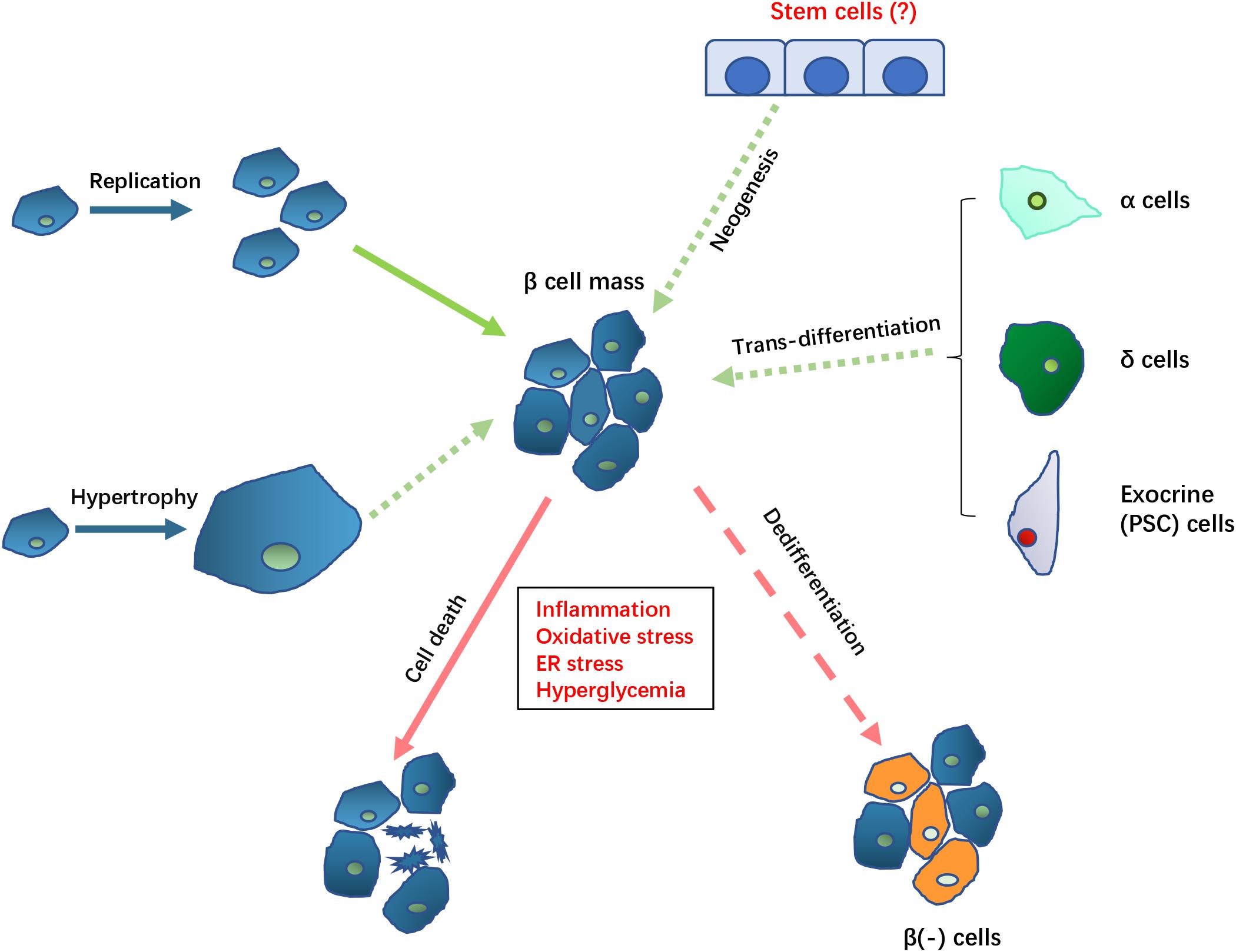



Frontiers Pathological Mechanisms In Diabetes Of The Exocrine Pancreas What S Known And What S To Know Physiology




Pancreatic And Salivary Glands The Gastrointestinal System Medical Physiology 2e Updated Edition With Student Consult Online Access 2e Medical Physiology Boron 2nd Ed
CCK33 gave rise to significantly higher protein and trypsin output compared to pentagastrin for both doses and infusion routes The results indicate that low doses of CCK33 infused to the duodenal region do not stimulate the exocrine pancreas via the CCK2R since the result can't be reproduced with pentagastrinSecretion during continuous infusion of secretin (Hotz et al, 1973; Regulation of the exocrine pancreatic secretion elicited by a meal in man is incompletely understood In this study, we attempted to localize in the gastrointestinal tract areas that control postprandial trypsin secretion and to determine the effects of individual components of jejunal chyme on the mealstimulated trypsin secretion




Pancreatic Secretions




A Primer On Exocrine Pancreatic Insufficiency Fat Malabsorption And Fatty Acid Abnormalities
What hormone stimulates the pancreas to release insulin?



What Is The Difference Between Gastric Juice And Pancreatic Juice Pediaa Com




Molecular Mechanisms Of Pancreatic Bicarbonate Secretion Pancreapedia




Pancreatic Secretions Your Boy Chou Chou Flashcards Quizlet




Pancreatic Juice An Overview Sciencedirect Topics
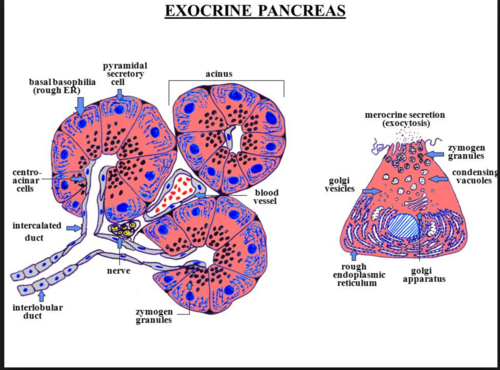



U1i 19b13 Describe The Exocrine Functions Of The Pancreas Jenny S Jam Jar




Regulation Of Pancreatic Secretion Abdominal Key




Exocrine Secretions Of Pancreas Name And Describe Chegg Com
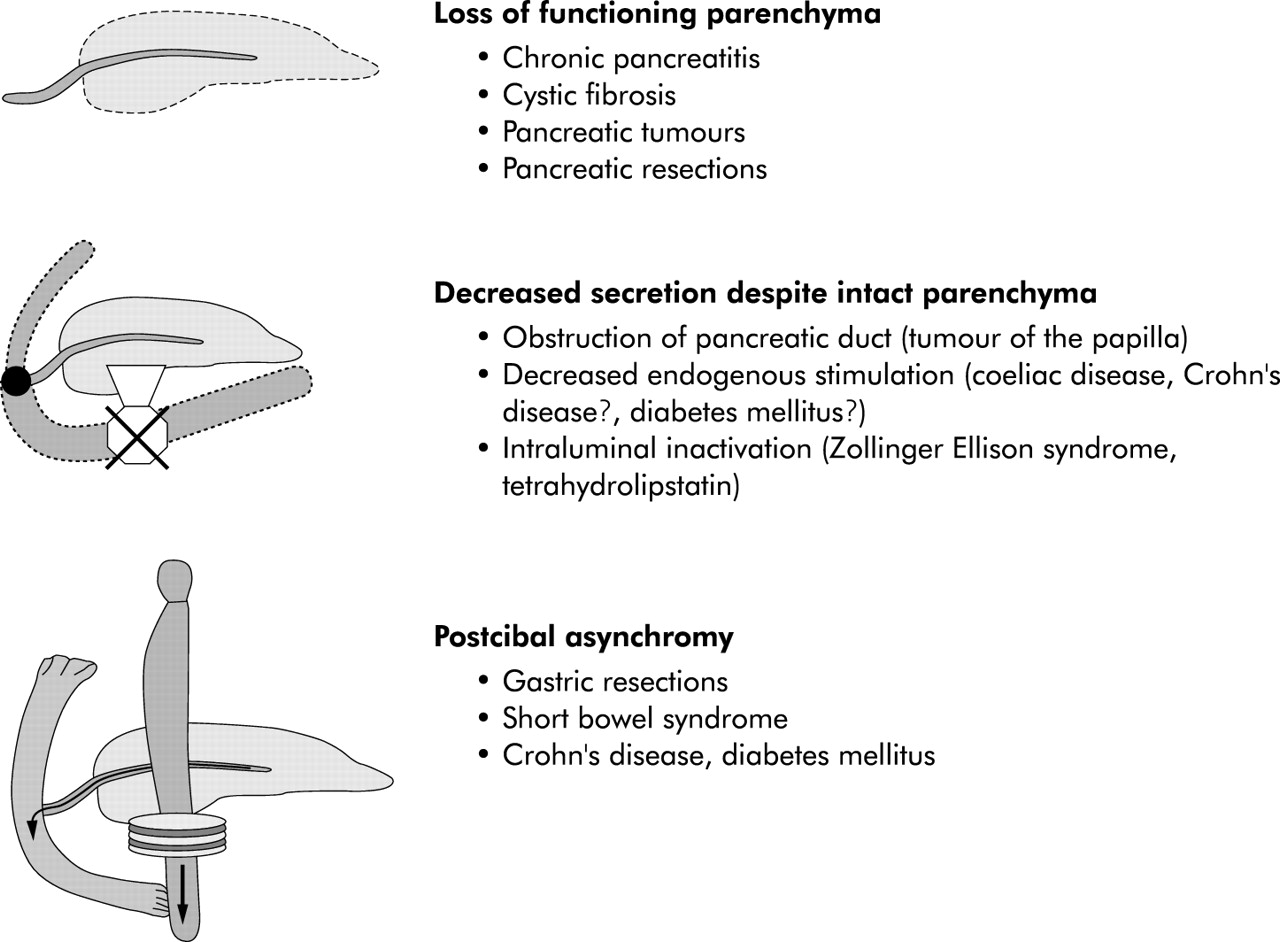



Human Pancreatic Exocrine Response To Nutrients In Health And Disease Gut
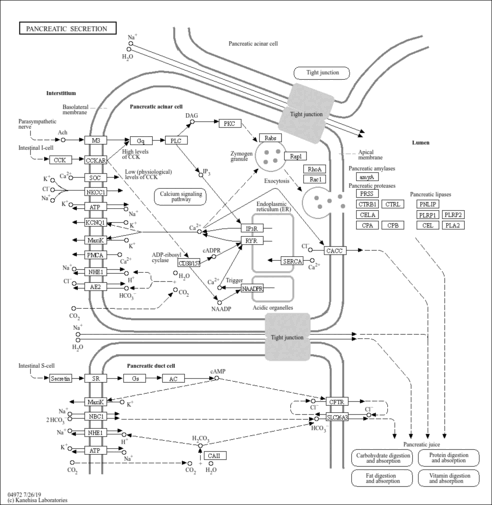



Kegg Pathway Map




Endocrine Pancreatic Cell Types And Their Peptide Secretions Exocrine Download Scientific Diagram




Regulation Of Pancreatic Exocrine Function By Islet Hormones Pancreapedia




Human Pancreatic Exocrine Response To Nutrients In Health And Disease Gut
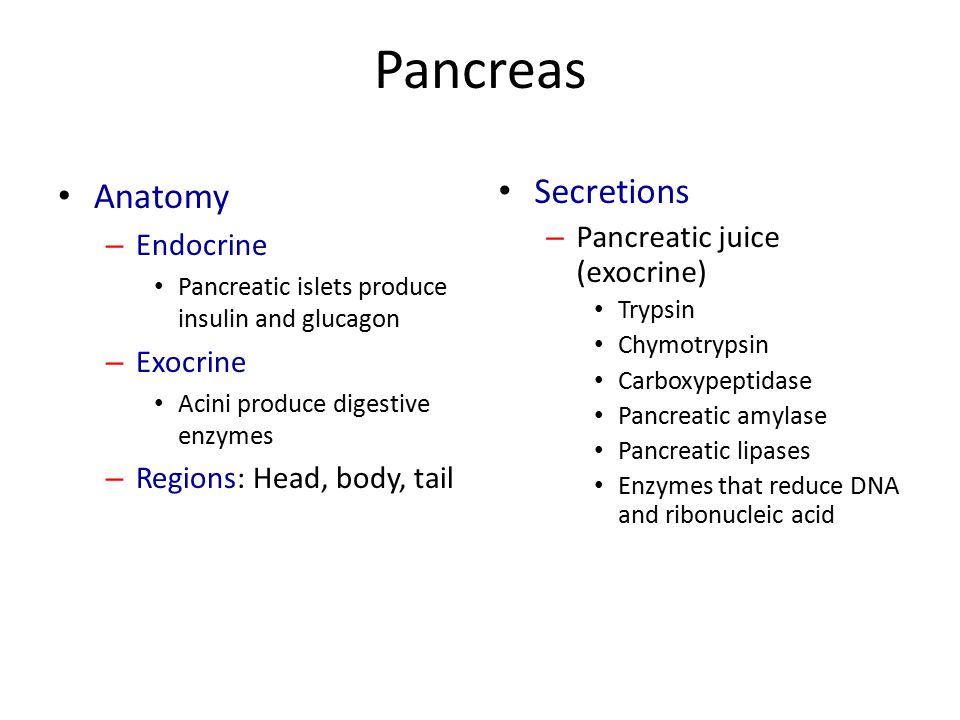



Phases Of Gastric Secretion Ppt Video Online Download




Pancreatic Exocrine Insufficiency Diagnosis And Treatment Dominguez Munoz 11 Journal Of Gastroenterology And Hepatology Wiley Online Library




Regulation Of Pancreatic Exocrine Secretion In Ruminants A Review Semantic Scholar




Topic 14 Nutrition In Pancreatic Diseases Module 14 2 Chronic Pancreatitis Printable Version Johann Ockenga Md Prof Dep Of Gastroenterology Endocrinology Nutrition Klinikum Bremen Mitte St Juergensstrasse 1 Bremen Frg Learning




Pancreas The Pancreas Acts As An Exocrine Gland




Pdf Luminal Cck And Its Neuronal Action On Exocrine Pancreatic Secretion Semantic Scholar



Exocrine Secretions Of The Pancreas
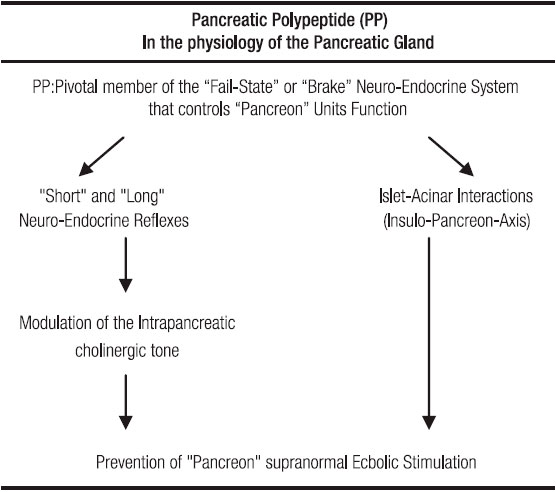



Pancreatic Polypeptide A Review Of Its Involvement In Neuro Endocrine Reflexes Islet Acinar Interactions And Ethanol Evoked Physiopatologic Pancreatic Gland Changes




Pancreatic And Salivary Glands The Gastrointestinal System Medical Physiology 2e Updated Edition With Student Consult Online Access 2e Medical Physiology Boron 2nd Ed




The Endocrine Pancreas Anatomy And Physiology Ii



Physiology Regulation Of Pancreatic Secretion




Islet Hormones And Pancreatic Exocrine Secretion Download Table




Enzyme Release An Overview Sciencedirect Topics




Pancreatic Secretion Dr Amel Eassawi Dr Shaikh Mujeeb Ahmed Ppt Download
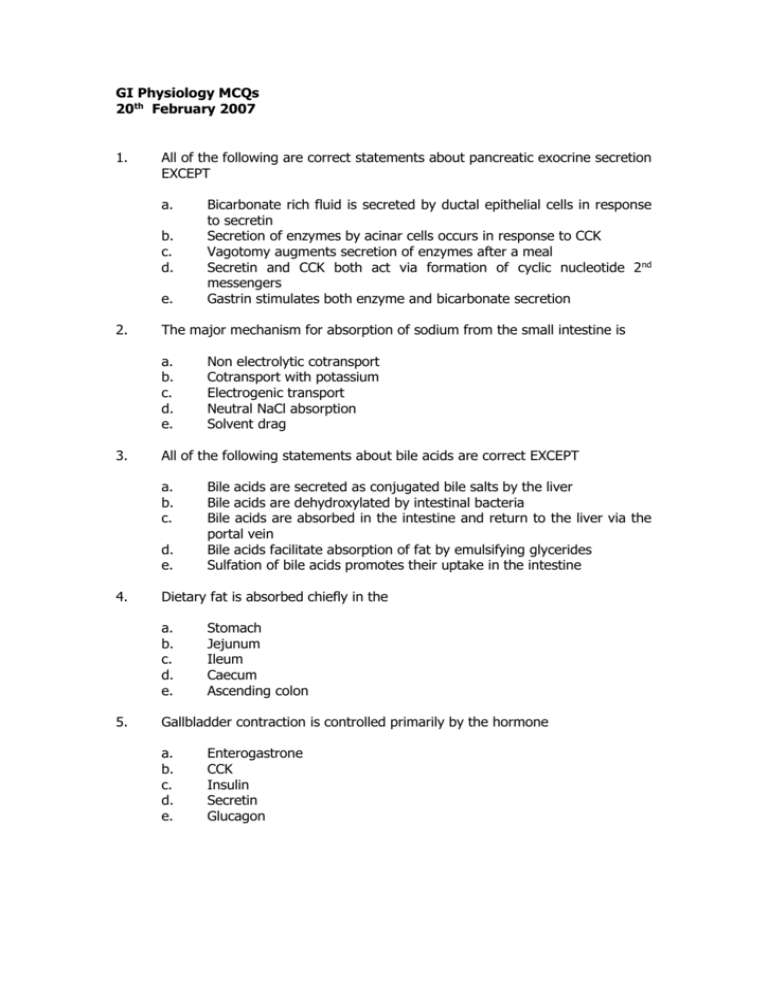



Gi Physiology Mcqs




A Tale Of Two Pancreases Exocrine Pathology And Endocrine Dysfunction Springerlink




Endocrine Pancreatic Cell Types And Their Peptide Secretions Exocrine Download Scientific Diagram




Pancreas Flashcards Quizlet
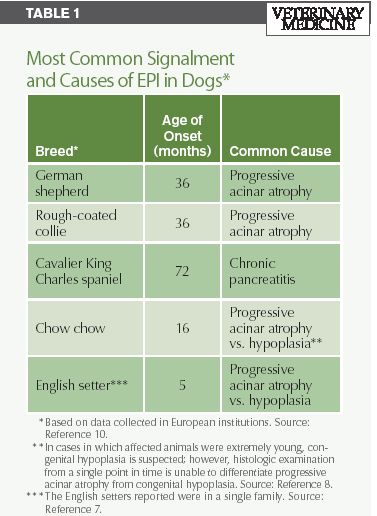



A Quick Review Of Canine Exocrine Pancreatic Insufficiency




Pancreas The Pancreas Acts As An Exocrine Gland
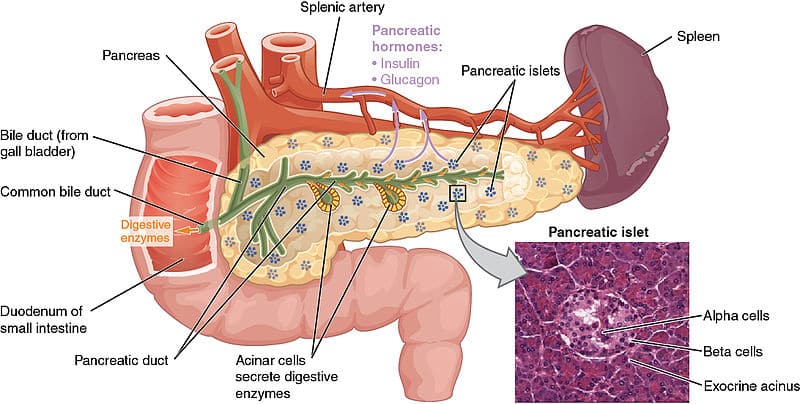



The Exocrine Pancreas Function Secretion Regulation




Pancreas Physiology Intechopen
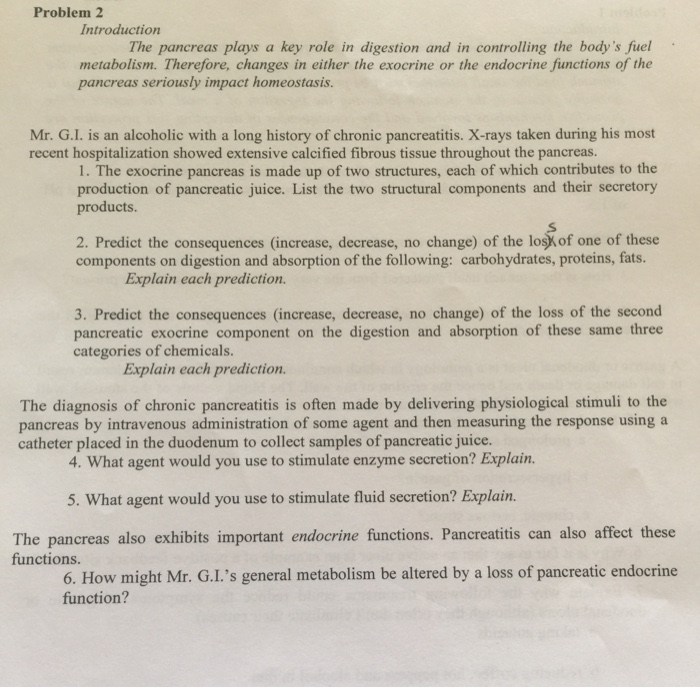



Solved The Pancreas Plays A Key Role In Digestion And In Chegg Com




Exocrine Pancreatic Insufficiency In Dogs Vca Animal Hospital




Animal Histology Biol 241 Topic 10 Digestive System



Ksumsc Com



Aop Wiki
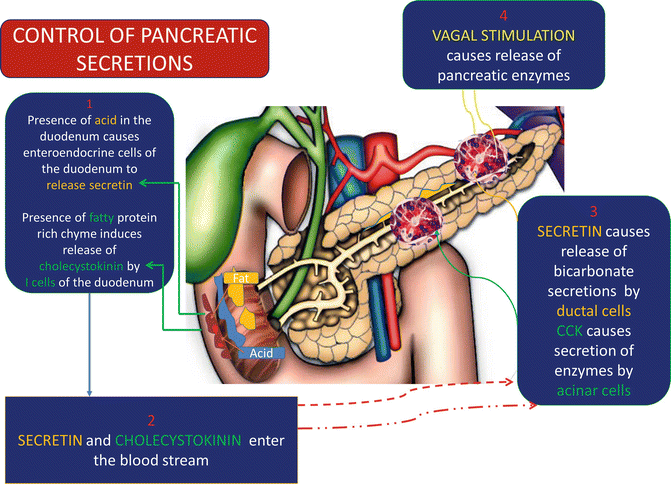



Physiology Of The Pancreas Radiology Key




Implications Of Integrated Pancreatic Microcirculation Crosstalk Between Endocrine And Exocrine Compartments Diabetes




The Exocrine Pancreas Basicmedical Key




Role Of Aquaporins In Isotonic Fluid Secretion And Zymogen Granule Download Scientific Diagram
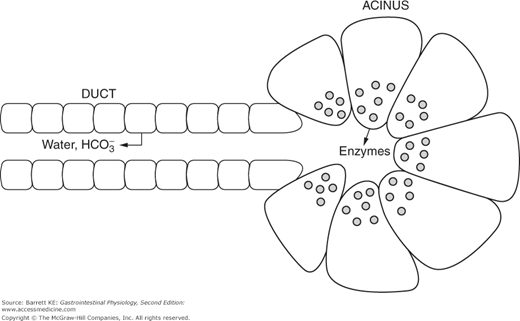



Pancreatic And Salivary Secretion Basicmedical Key
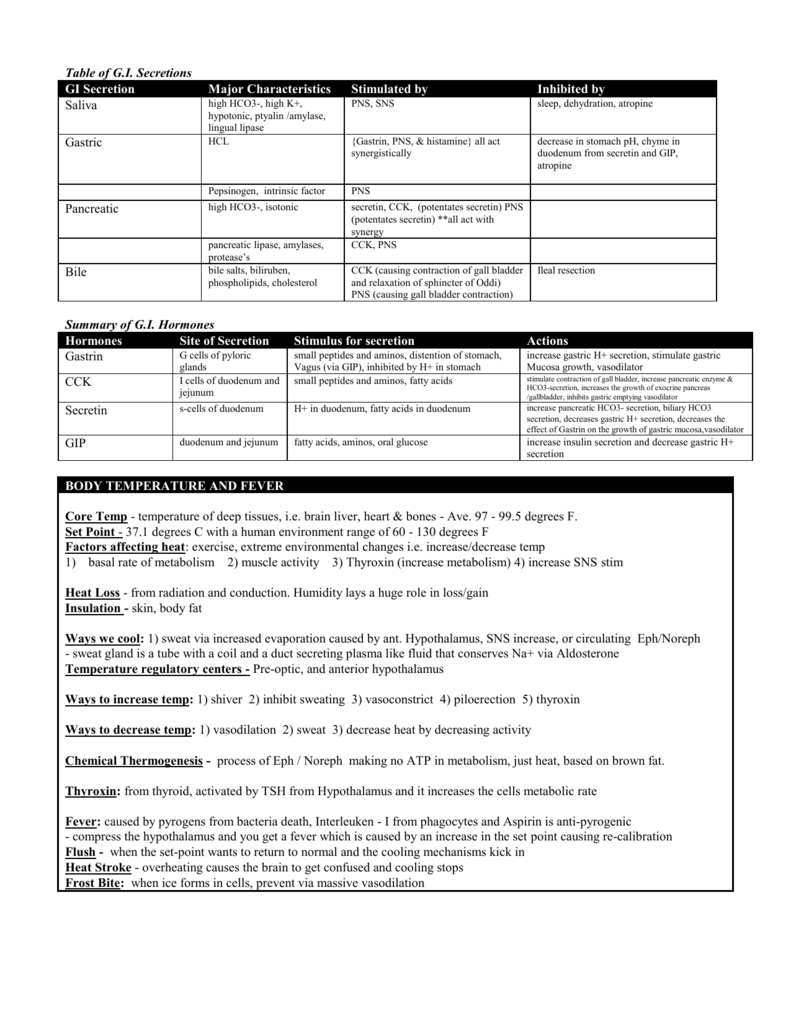



Table Of G




Pancreatic Secretions The Pancreas Acts As An Exocrine Gland By Producing Pancreatic Juice Which Empties Into The Small Intestine Via A Duct The Pancreas Ppt Download




A Tale Of Two Pancreases Exocrine Pathology And Endocrine Dysfunction Springerlink




Pancreatic Secretion Flashcards Quizlet




Pancreatic And Salivary Glands The Gastrointestinal System Medical Physiology 2e Updated Edition With Student Consult Online Access 2e Medical Physiology Boron 2nd Ed
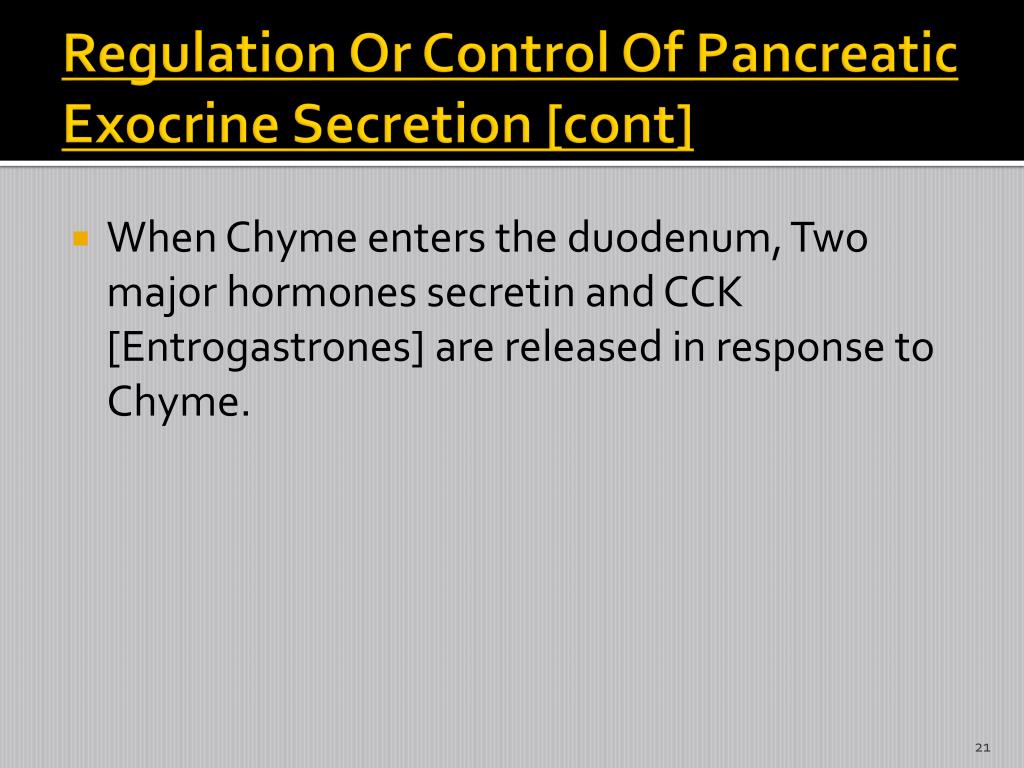



Ppt Pancreatic Secretion Powerpoint Presentation Free Download Id




The Influence Of Aging On Basal And Secretin Stimulated Pancreatic Exocrine Secretion In The Unanesthetized Rat Semantic Scholar
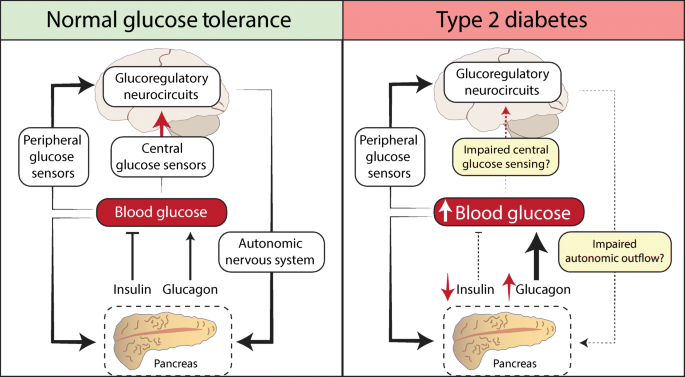



Cns Control Of The Endocrine Pancreas Springerlink




Pancreatic Secretion Osmosis




Regulation Of Secretion Of Exocrine Pancreas Gastrointestinal Physiology Youtube
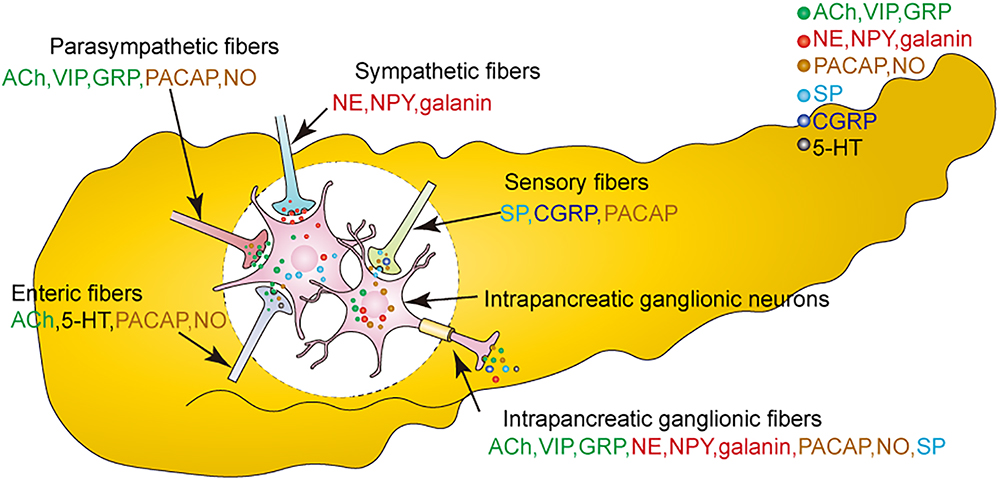



Frontiers Intrapancreatic Ganglia And Neural Regulation Of Pancreatic Endocrine Secretion Neuroscience




An Overview Of The Pancreas Understanding Insulin And Diabetes



Ksumsc Com
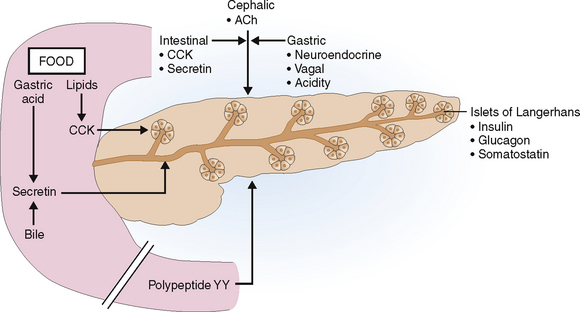



The Exocrine Pancreas Basicmedical Key
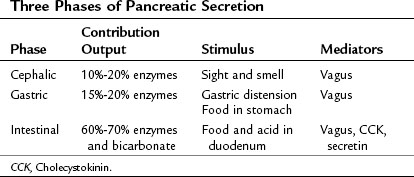



Pancreatic Physiology And Functional Assessment Abdominal Key




How Does Cholecystokinin Stimulate Exocrine Pancreatic Secretion From Birds Rodents To Humans American Journal Of Physiology Regulatory Integrative And Comparative Physiology



1




Composition Function And Control Of Pancreatic Secretion Pancreatic And Salivary Glands The Gastrointestinal System Medical Physiology 3rd Edition
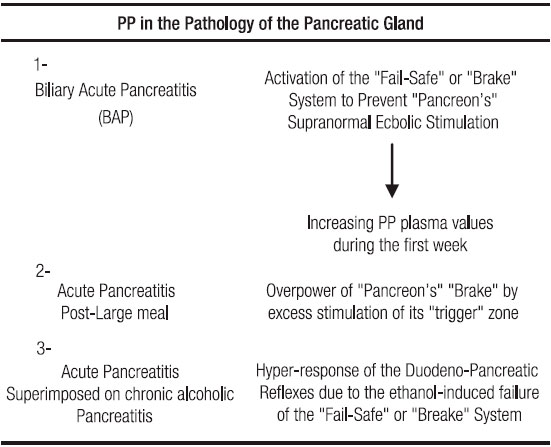



Pancreatic Polypeptide A Review Of Its Involvement In Neuro Endocrine Reflexes Islet Acinar Interactions And Ethanol Evoked Physiopatologic Pancreatic Gland Changes



Ksumsc Com




Secretion Of The Human Exocrine Pancreas In Health And Disease Pancreapedia




Exocrine Pancreatic Secretions Gastrointestinal Physiology Mbbs 1st Year Lectures Youtube



1



Which Hormone Acts As On The Exocrine Part Of The Pancreas And Stimulates The Secretion Of Water And Bicarbonate Ions Quora



Documen Site




Exocrine And Endocrine Interactions In Cystic Fibrosis A Potential Key To Understanding Insulin Secretion In Health And Disease Diabetes




Pancreas Physiology Intechopen




Pancreatic Stellate Cells Produce Acetylcholine And May Play A Role In Pancreatic Exocrine Secretion Pnas
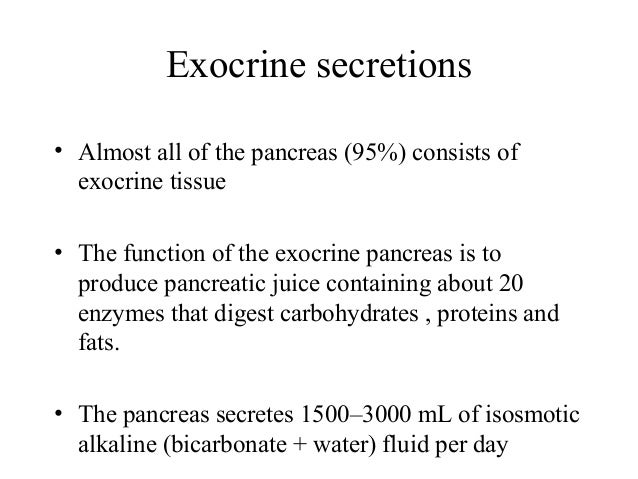



Pancreas Anatomy And Functions
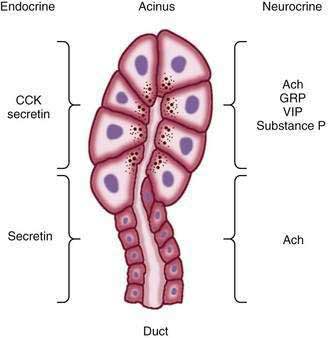



Pancreatic Secretion Clinical Gate
コメント
コメントを投稿